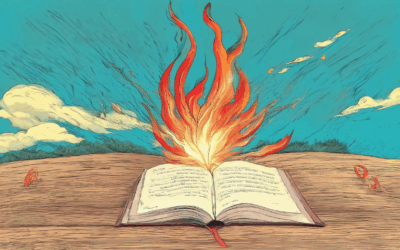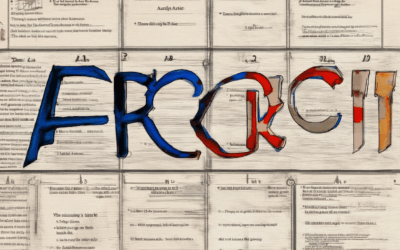Mastering Plot Development: The Ultimate Guide to Crafting Compelling Stories
Have you ever wondered how some stories captivate you from the very first page? While great characters and vivid settings are undeniably crucial, it’s the underlying structure—plot development—that truly binds a narrative together. Whether you’re crafting a short story, a novel, or even a script, plot development serves as the backbone of your tale, guiding readers through a journey that keeps them hooked until the final chapter.
This comprehensive guide delves into the intricacies of plot development, offering insights, strategies, and practical tips to help you create a compelling and cohesive storyline. From understanding the essential elements to exploring real-life examples, we’ll walk you through everything you need to know to elevate your writing skills.
Whether you’re a seasoned writer or just starting out, this guide will equip you with the tools to develop a plot that resonates with readers long after they’ve turned the last page. Let’s dive in and uncover the secrets to crafting a plot that captivates, engages, and leaves a lasting impression.
Key Takeaways
– Understanding Plot Development: Mastering plot development is essential for creating engaging stories, involving the construction of events that drive the narrative forward, leading to climax and resolution.
– Importance of Plot Development: A well-structured plot establishes clear stakes, builds suspense, and allows readers to connect emotionally with the characters and the story.
– Character Arcs and Stakes: Effective plot development often revolves around character transformation, addressing moral dilemmas, and setting personal or universal stakes to heighten urgency.
– Crafting a Strong Plot: Develop a unique hook, align conflicts with characters’ goals, build incremental tension, resolve meaningfully, and foster emotional connections through relatable struggles.

How to Write a Plot Development
Writing a plot development involves a series of steps to create a compelling and structured narrative. Below is a step-by-step guide:
- Brainstorm Ideas: Start by gathering inspiration from various sources such as books, movies, personal experiences, or observations. Note down potential themes, settings, and characters.
- Define Core Elements: Identify the key components of your story including:
- Protagonist: Choose a relatable and memorable character who will drive your plot forward.
- Setting: Decide on the time and place where your story will unfold. This can be historical, contemporary, or fantastical.
- Conflict: Determine the central conflict or problem that your protagonist will face. This could be internal (psychological) or external (environmental or societal).
- Theme: Identify the underlying message or moral of your story that you want to convey to your readers.
- Outline the Structure: Create a basic framework for your plot. Most stories follow a three-act structure:
- Act 1: Introduce the protagonist, setting, and initial conflict. Establish the world and provide background information.
- Act 2: Develop the conflict, introduce challenges, and develop subplots. Build tension and suspense.
- Act 3: Resolve the main conflict, climax, and conclude the story. Provide closure and allow the protagonist to grow.
- Develop Characters: Flesh out your characters. Give them personalities, motivations, and backstories. Show their growth throughout the plot.
- Identify Conflicts: Determine both external and internal conflicts that will drive your protagonist forward. External conflicts may include obstacles or antagonists, while internal conflicts may involve personal struggles or emotional dilemmas.
- Create Plot Points: Outline significant events and turning points in your story. These include:
- Inciting Incident: The event that kicks off the main plotline.
- Rising Action: A series of events that increase tension and lead to the climax.
- Climax: The highest point of conflict where the outcome is uncertain.
- Resolution: The final resolution of the plot where loose ends are tied up.
- Revise and Refine: Read through your plot development and make adjustments based on feedback. Ensure the pacing is balanced and the plot is engaging.
- Consider Your Audience: Tailor your plot to appeal to your target audience. Consider their interests, preferences, and expectations.
The Five Elements of Plot Development
The foundation of any compelling story lies in its plot structure. A well-crafted plot keeps readers engaged and ensures the narrative flows smoothly from beginning to end. Below are the five essential elements of plot development:
- Exposition
- The exposition introduces the setting, characters, and background information necessary to understand the story. It sets the stage for the audience, providing context and establishing the status quo. For instance, in a mystery novel, the exposition might reveal the protagonist’s circumstances and the world they inhabit.
-
Rising Action
- The rising action is the sequence of events that create tension and drive the plot forward. This phase introduces conflicts and challenges that the protagonist must overcome. Think of it as the “setup” phase where characters are positioned for growth and conflict. In a romance story, this could involve the meeting of the two main characters and the initial attraction.
-
Climax
- The climax represents the peak of the story’s conflict. It is the point where the protagonist faces their greatest challenge or makes a significant decision that shapes the rest of the narrative. For example, in an adventure film, the climax might involve a final battle or a critical choice that determines the outcome.
-
Falling Action
- After the climax, the falling action resolves the main plotline(s). This phase wraps up the story, showing the consequences of the protagonist’s actions and bringing closure to the narrative. In a coming-of-age story, the falling action might show the protagonist accepting their new role in life.
-
Resolution
- The resolution ties up loose ends and provides a satisfying conclusion. It answers unanswered questions and gives the audience a sense of completion. In a comedy, the resolution often involves a happy ending, while in a tragedy, it might explore the lingering effects of the events.
By mastering these elements, writers can craft stories that captivate audiences and maintain their interest throughout the narrative. Each phase plays a crucial role in shaping the overall arc of the story, ensuring that the plot develops logically and cohesively.
Learn more about storytelling techniques and narrative development.

What Are the Steps of Plot Development?
Here are the key steps involved in developing a plot:
- Identify the Core Theme : Start by determining the central theme or message of your story. This serves as the foundation for all subsequent decisions.
- Develop Character Arcs : Create well-defined protagonist(s) and antagonist(s). Outline their motivations, flaws, and growth trajectories to drive the narrative forward.
- Establish Setting and World-Building : Define the setting(s) where the story unfolds. Whether it’s a historical era, futuristic city, or imaginary world, consistency is crucial.
- Create Conflict and stakes : Introduce conflicts that challenge your characters and create tension. Ensure the stakes are high enough to engage readers emotionally.
- Outline the Story Structure : Decide on the sequence of events. Use a reliable structure like the three-act structure or expand upon it based on your needs.
- Draft and Refine : Write the initial draft, then revise to enhance pacing, dialogue, and character depth. Edit to fix any weaknesses in the plot or writing style.
- Polish and Finalize : Proofread for grammar, spelling, and coherence. Ensure the plot resolves satisfactorily and leaves a lasting impression.
- Seek Feedback : Share the plot with trusted readers or editors to gain constructive criticism and identify areas for improvement.
By following these steps, you can develop a compelling and cohesive plot that captivates your audience while meeting the highest standards of storytelling.

Example of Plot Development
Plot development refers to the process of constructing a sequence of events that drive a story forward, leading to its climax and resolution. Here’s an example:
Consider a scenario where a high school senior, eager for college admissions, faces unexpected challenges. For instance, during their final year, they might discover a hidden talent or face a moral dilemma that shapes their future decisions. This journey of self-discovery and growth forms the core of their plot development.
Another example could involve a protagonist who reluctantly takes on a leadership role in their community, such as organizing a town cleanup campaign. Through this initiative, they learn valuable lessons about responsibility and teamwork, ultimately transforming themselves in the process.
These moments mark the turning points where characters make choices that define the story’s direction. Effective plot development ensures that these choices lead to meaningful conflict and character growth, keeping audiences engaged until the final resolution.
The Importance of Plot Development
Developing a strong plot is crucial for storytelling success. It establishes clear stakes, enabling characters to face meaningful challenges. A well-structured plot also builds suspense, allowing readers to connect emotionally with the narrative.
Character Arcs and Stakes
A well-developed plot often revolves around the transformation of its characters. Whether it’s overcoming fear, learning important life lessons, or confronting moral dilemmas, the character arc adds depth to the story. Stakes, whether personal or universal, give the plot its urgency and drive.
Tips for Creating a Strong Plot
- Start with a unique hook to grab attention early.
- Introduce conflicts that align with the characters’ goals.
- Build incremental tension to keep the audience invested.
- End with a resolution that leaves a lasting impact.
- Foster emotional connections through relatable struggles.
By focusing on these elements, authors can craft plots that resonate deeply with readers, leaving a lasting impression long after the story concludes.
For more insights into crafting compelling narratives, visit James Whitfield Thomson and explore their resources on storytelling techniques and plot development.
What is an example of a plot in writing?
A plot in writing refers to the sequence of events that make up a story, often arranged in a specific order to convey a particular theme or message. Below is an example of a plot structure:
- Inciting Incident : A catalyst that disrupts the normal order of life, triggering the protagonist’s journey.
- Example: A small village is thrown into chaos when mysterious strangers arrive, claiming to be escaping a dangerous war.
- Rising Action : Events occur that escalate the conflict and develop the story’s tension.
- Example: The villagers learn the strangers are soldiers fleeing a losing war, and tensions rise as fear of invasion spreads through the community.
- Climax : The most intense moment of conflict, often a turning point where the protagonist faces their greatest challenge.
- Example: The protagonist discovers a hidden enemy spy among the refugees and must decide whether to trust them or betray them to protect their village.
- Resolution : The final events leading to the conclusion of the story, resolving the central conflict.
- Example: The protagonist chooses to help the spy escape, leading to the departure of the soldiers and the return of peace to the village.
This example demonstrates how a simple yet effective plot can capture the attention of readers and guide them through a narrative journey. For more insights into crafting compelling plots, visit James Whitfield Thomson .

What Are the 5 Stages of a Plot?
The plot of a story is a structured sequence of events that guide the audience through the narrative. Understanding the five stages of a plot can help in crafting a compelling and engaging story. Here’s a breakdown of each stage:
1. Exposition
The exposition is the introductory phase of the plot where the setting, characters, and background information are established. This stage sets the stage for the rest of the story by providing necessary context. Examples include introducing the protagonist, explaining the world they live in, and hinting at the central conflict.
2. Rising Action
After the exposition, the rising action introduces the main conflict and builds suspense. This stage is filled with incidents that escalate the tension, leading the protagonist closer to the climax. Key elements include character development, the introduction of challenges, and the growing stakes of the story.
3. Climax
The climax represents the peak of the story where the central conflict reaches its highest point of tension. This is often the most dramatic moment of the narrative, where crucial decisions are made, and significant changes occur. The climax resolves the main conflict or sets up the final resolution.
4. Falling Action
Following the climax, the falling action involves the resolution of the main plotline. This stage wraps up loose ends and shows the consequences of the events that transpired. It may involve character development, closure for supporting characters, and the final resolution of the story.
5. Resolution
The resolution concludes the story by tying up all loose ends and providing closure. It answers unanswered questions, confirms the outcome of the conflict, and leaves the audience with a sense of completion. The resolution can be happy, bittersweet, or open-ended, depending on the story’s tone and themes.
Understanding these stages allows writers to structure their stories effectively, ensuring a logical progression of events and keeping readers engaged throughout the narrative.
Link to learn more about storytelling techniques
Link to explore narrative development
Link to discover writing tips





0 Comments